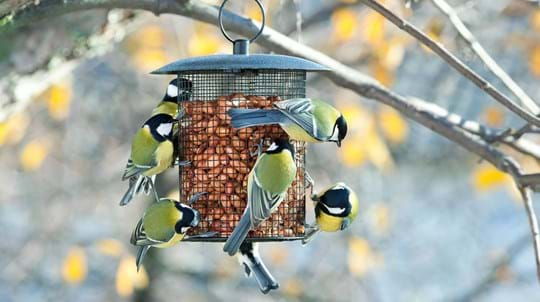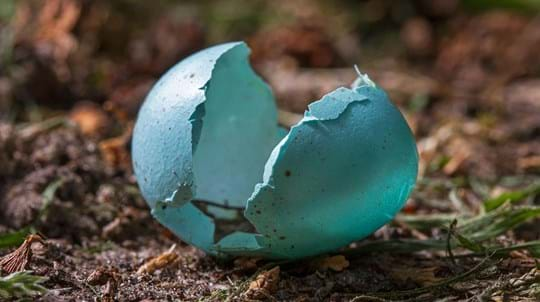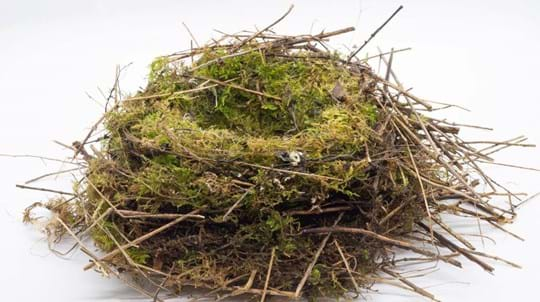
Credit: WTML / Amy Lewis
What do dunnocks eat?
Insects and invertebrates are the dunnock’s main food, but it will also take seeds in winter.
More than just a little brown job. Dunnocks may not be the most glamorous of birds, but there is more to this species than meets the eye, especially when it comes to mating.
Common names: dunnock, hedge sparrow
Scientific name: Prunella modularis
Family: Prunellidae (accentors)
Habitat: woodland, farmland, scrub, parks and gardens
Diet: invertebrates and seeds
Predators: sparrowhawks and cats take adults; a range of predators may take eggs and chicks
Origin: native
When seen at a distance, dunnocks appear a drab brown. Get a closer view and you will notice a grey breast and head and dark streaks on the wings. They are roughly the same size as a robin.
Not to be confused with: the house sparrow. These birds can look similar from a distance, but the easiest way to tell them apart is the beak. A dunnock’s bill is thin and pointy, while a sparrow’s is much broader and powerful looking. Sparrows also live in flocks, while dunnocks are rarely seen in more than pairs.

Credit: WTML / Amy Lewis
Insects and invertebrates are the dunnock’s main food, but it will also take seeds in winter.
Dunnocks can raise several broods of chicks per year. This means the population can be maintained despite some nests being taken over by cuckoos.
The dunnock’s breeding behaviour is somewhat different to many other birds. Unlike most species, the female will often mate with several males and chicks within the same brood may have different fathers. Sometimes, two males will effectively ‘share’ females by working together to defend a territory against rivals. Mating with both males is advantageous for the female, as both will then help to raise her chicks.
Dunnocks nest in dense vegetation, building a nest out of twigs and moss. Four to five eggs are normally laid from late April to June. The chicks will hatch after around two weeks and fledge two weeks later.
It is not just their own young that dunnocks will raise, however. The species is a favoured host for the cuckoo, which often lays its eggs in the smaller bird’s nest. Once hatched, the cuckoo chick will push any dunnock eggs and chicks out of the nest, ensuring it receives the full attention of its surrogate parents, who will continue to feed it as if it were their own offspring.

Credit: Rebecca Cole / Alamy Stock Photo
Dunnocks occur across the UK and can be found in woodland, farmland and urban areas with plenty of vegetation.
When competing over a territory, male dunnocks will flick their wings and chase each other.
Dunnocks are commonly seen in and around hedgerows. Look out for the species hopping along the ground as it searches for insects. They are also commonly seen in gardens. Dunnocks rarely visit bird feeders, but will take food scattered on the ground or on bird tables. The species’ main call is a persistent, high-pitched 'tseep' sound.
Audio: David M / xeno-canto.org

Credit: WTML / John Bridges
The dunnock is a common bird, with an estimated two million pairs in the UK, but numbers have fallen by close to a third since the 1970s. Loss and damage of woodland and hedgerows may have contributed to this decline. Thankfully, the population has been growing since the 1990s, but it remains of conservation concern.

Blog
Kayleigh Jacobs-Rutter • 29 Apr 2025

Blog
Helen Keating • 05 May 2020

Blog
Amy Lewis • 16 Feb 2022

Blog
Kayleigh Jacobs-Rutter • 13 Feb 2024